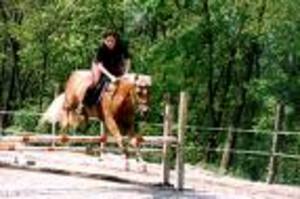The blue wildebeest, connochaetes taurinus, also known as the brindled gnu (pronounced ‘g-new’ or just ‘new’) is actually a subspecies of the antelope, making it related to creatures like the royal antelope. Males are both taller and heavier than females, standing 4.8 feet (1.4 meters) tall at the shoulders and weighing up to 639 pounds (290 kilograms). Females on the other hand, only stand 4.4 feet (1.3 meters) tall and weigh up to 573 pounds (260 kilograms). A blue wildebeest has a grayish to brown colored coat with a silvery-blue sheen to it (hence the name). They have high shoulders, a broad muzzle and cow-like horns.
The blue wildebeest can be found in Africa from Kenya and Tanzania, all the way south to Zambia, Namibia, Botswana, Mozambique, northern South Africa and even southern Angola. They usually inhabit open short-grass plains as well as open bushland, Acacia savannah and woodland in drier areas. These large creatures travel in groups called a herd, which may contain as many as 10 to 100 individuals. Males will form small, bachelor herds (although some will establish a solitary territory) while females with young form small groups as well. They communicate with one another by using grunting calls.
The diet of a blue wildebeest consists almost entirely of short grasses. Most will migrate and follow the rains in order to get the freshest grass, forming one of the ‘great migrations’ of the animal kingdom. They must drink every day or two, so they are almost always near a water source. Those that live in the waterless Kalahari region will eat melons as well as water-storing roots and tubers to get their water. The blue wildebeest has many predators such as lions, spotted hyenas, African wild dogs, cheetahs, leopards and crocodiles. When danger is detected, they will all run together in a stampede to both avoid and intimidate their pursuers.
Breeding season for the blue wildebeest takes place from April to June. Females will give birth to a single calf after a gestation period of around 8 months. A calf is able to stand and run almost immediately after it is born. The calf will nurse for about nine months before being weaned. Males are pushed out of the herd at around 1 year of age, at which point they will form a bachelor herd with older non-territorial males. It is when they reach sexual maturity at 3 or 4 years old, that males will become solitary and form temporary or permanent territories, which they will defend from intruders. If the calves can survive long enough, then they can live to be up to 20 years old.
The blue wildebeest is numerous and widespread, although some populations are facing threats from people. While natural population decline caused by droughts are to be expected, the loss of natural habitat and seasonal migration routes all could negatively affect the overall population. Hopefully, the blue wildebeest can continue to keep its healthy population and avoid facing the threat of extinction. After all, such a unique species of antelope deserves to live and prosper far into the future.
Works Cited
“Blue Wildebeest (Connochaetes Taurinus)” 11 June 2011
“Blue Wildebeest” 11 June 2011
“Blue Wildebeest” 11 June 2011

